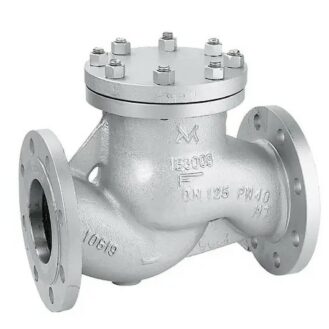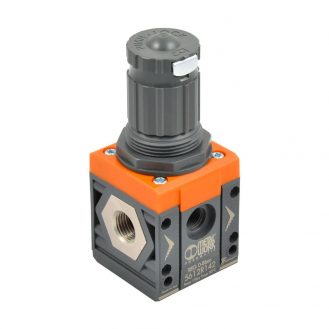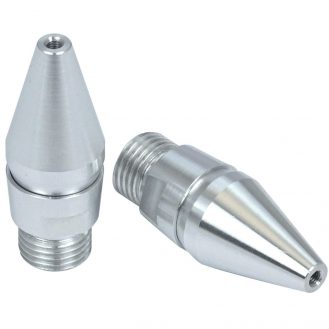There are four types of hydraulic pumps:

Gear pumps
Gear pumps
Gear pumps have very few moving parts. They consist of two intermeshing gears. These pumps have a constant flow rate. They operate at pressures generally between 50 and 210 bar. Gear pumps operate at the highest speeds of any pumps at up to 3000-6000 rpm.
Advantages:
- They are inexpensive
- They have fixed-displacement
Disadvantages:
- Their volumetric efficiency is low
There are two types of gear pumps: external-gear pumps and internal-gear pumps.
External-gear pumps:
- In an external-gear pump, only one of the gear wheels, the drive gear, is connected to the drive. The other gear wheel, the driven gear, rotates in the opposite direction, so that the teeth of the rotating gear wheels interlock.
There are also double external-gear pumps, which combine two gear pumps driven by the same coupling shaft. A double external-gear pump has the advantage of supplying two independent hydraulic circuits, and also provides more flow to one circuit.
Internal-gear pumps:
- They have an eccentric internal gear wheel and an external gear wheel, also called a crown gear.
- When the external gear rotates, volume is created between the gear wheel profiles and the external gear teeth attached to the gear housing walls.
- The product is sucked up when the two wheels disengage.
Advantages:
- Internal-gear pumps are very quiet
- They provide a constant flow

Piston pump
Piston pumps
Hydraulic piston pumps handle very large flows at high pressures. They are operated by pistons that move back and forth continuously. The sealing properties of the pistons are excellent, allowing operation at high pressures with low fluid leakage.
Advantages:
- They offer the best overall volumetric efficiency
- They provide the highest pressures
- They are reliable
- They have high power density
- They are available in variable and fixed displacement models
Disadvantages:
- They are the most expensive hydraulic pumps
There are two types of piston mounting: radial mounting and axial mounting.
Axial mounting:
The design of the axial piston pump is based on the swash plate principle or curved shaft design.
- In the case of a swash plate, the rotating pistons are supported by a swash plate; the angle of which determines the piston stroke.
- In the curved shaft configuration, the displacement volume depends on the swivel angle: the pistons move in the cylinders as the shaft rotates.
Radial mounting:
Radial piston pumps are available in two different configurations.
- With an eccentric cylinder block: the piston turns inside the rigid outer ring. The eccentricity determines the stroke of the pistons.
- With an eccentric shaft: the rotating eccentric shaft causes radially oscillating piston movements.
Advantages:
- Radial piston pumps can be equipped with several different independent outputs.

Rotary vane pump
Rotary-vane pumps
These pumps have rectangular shaped vanes mounted into radial groves on the rotor. This allows the vanes to move radially.
Advantages:
- They generally offer better volumetric efficiency than gear pumps.
- They produce less noise while maintaining high speeds (up to 3,000 rpm).
- There are available in variable and fixed displacement models
- When they are variable displacement, the flow rate can be reduced if necessary and thus energy consumption can be reduced.
Disadvantages:
- They are more expensive than gear pumps (and less expensive than piston pumps).
- They are also fragile because the vanes are subjected to bending stress due to the discharge pressure.
















Great article on vacuum pumps! As someone who works in the manufacturing industry, I found this post to be incredibly informative and well-written. The explanations of the different types of vacuum pumps and their applications were clear and easy to understand, even for someone who may not have a technical background.